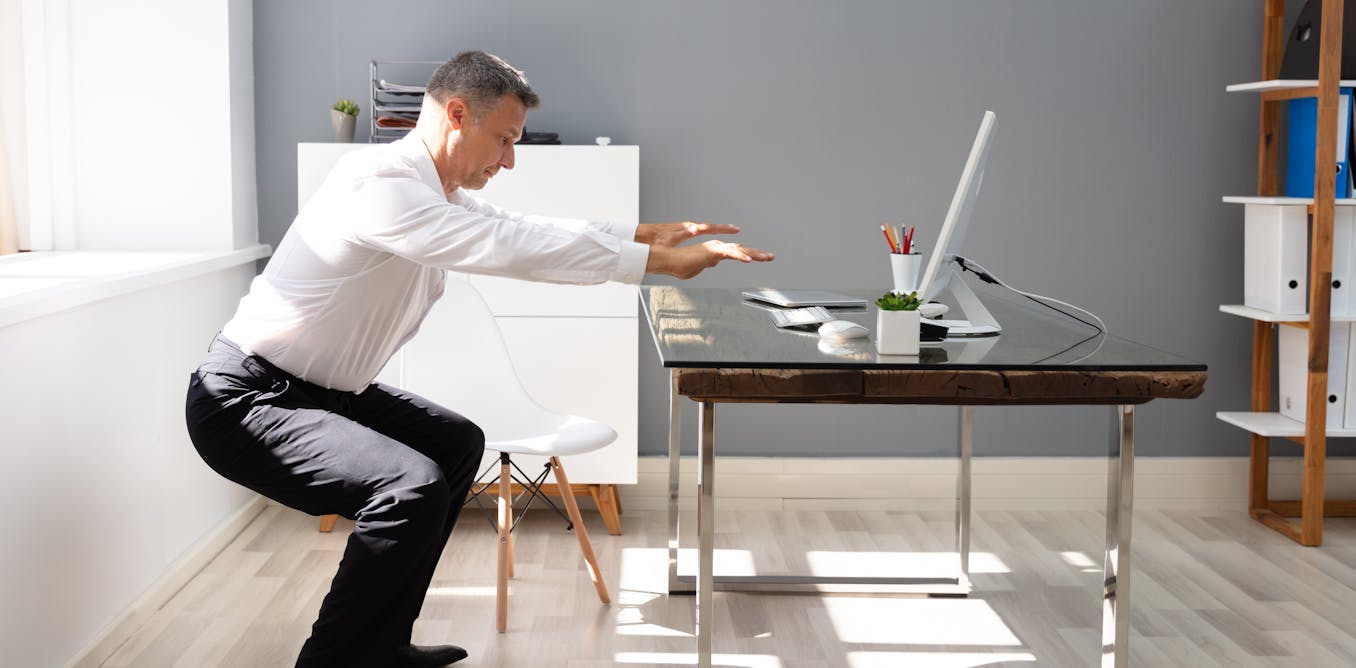Physical inactivity is a killer. When we become inactive, we lose muscular strength. When we lack muscular strength, we may be more likely to experience a host of health issues, including cognitive decline, poor mental health, musculoskeletal conditions, have a fall, get seriously injured, become hospitalisedand develop diabetes, heart diseasedementia, frailty, functional disability and even some forms of cancer.
The weakness caused by sedentary lifestyles places an unsustainable burden on carers and healthcare systems.
Lack of activity comes at a terrible price. The World Health Organization (WHO) estimates the cost of physical inactivity to public healthcare systems between 2020 and 2030 will be around US$300 billion (approximately £232 billion). In 2022, the UK government said lack of physical activity was associated with one in every six of the country’s deaths.
Historically, people became less active as they grow older. But now, younger peopleespecially those involved in sedentary work such as desk jobs, are becoming inactive, physically weak, taking more long-term sick leave, and retiring earlier.
Sedentary working conditions can lead to mental fatigue, aches and pains, and may even be a contributing factor to the all-time high of economic inactivity in the UK. Large employers – those with at least 1,000 employees – spend around £2 million annually on sickness absence.
Strength training is one of the most effective types of exercise for physical and mental health – and it’s one of two main recommendations listed on WHO’s physical activity guidelines. Unfortunately, strength training is also the physical activity that people are least likely to stick with.
For desk workers, taking strength breaks – such as body weight squats at your desk – has been shown to immediately increase blood flow, improve brain function including mental arousal and concentration, and reduce the feelings of fatigue.
However, in my experience as a clinical exercise physiologist, people tend to think they are not young, fit, energetic, or active enough to start strength training. But research has found the opposite to be true. Starting strength training, at any age and at any fitness level, leads to increased energy levels and spontaneous increases in physical activity.
Other barriers to getting started with strength training include a lack of time, a lack of specialist knowledge, and uncomfortable commercial gym spaces. These barriers are [exacerbated for women] who are more likely to have caring responsibilities, leaving little time to focus on strength training for health.
If we know the importance of strength, and strength training, and we know the barriers holding people back from participating, why do we continue to fall short in the global challenge of improving physical activity levels? Why is there a shortage of successful programmes in real-world settings?
My latest research found that people in the 40-60 year-old age bracket knew the benefit of having muscular strength and of participating in strength training, but lacked the practical know-how to participate. They called for an increase in support on where to find the details they need to feel confident enough to start with strength training.
Currently, they are left googling and hoping that the information they find is credible and evidence-based. Research participants also felt that the workplace was a missed opportunity to offer strength training support.
Keeping a healthy workforce
Do employees think that simply handing out free gym passes as part of their employee wellbeing package somehow overcomes the barriers of time (and childcare) we face when trying to get to the gym after work and knowing what to do when we get there?
Employers will need to put in more effort if they want to avoid the consequences of sedentary working conditions. We can’t wait until people reach a health crisis to intervene. We need to provide proactive and practical support for people to take care of their health while at work.
It makes sense that employers would want to provide the time and space for their employees to get their strength training session in during the workday. This could look like hiring an exercise physiologist or strength coach to come into the office or even using technology to deliver strength sessions virtually and on-demand to employees who work from home. Programmes could even gamify participation to build camaraderie within and between departments or companies.
What’s more, building this healthy habit now is likely to lead to more people taking that habit well into their retirement years – keeping people stronger, more active, more independent and healthier for longer.
Providing strength training support for 30 minutes, twice per week seems like a small sacrifice for a healthier, happier, more productive, and resilient workforce.
If you’re looking for the easiest way to improve physical activity levels, health, and office culture all at the same time, then look no further. Implementing strength training in the workplace seems like a pretty strong investment to me.






